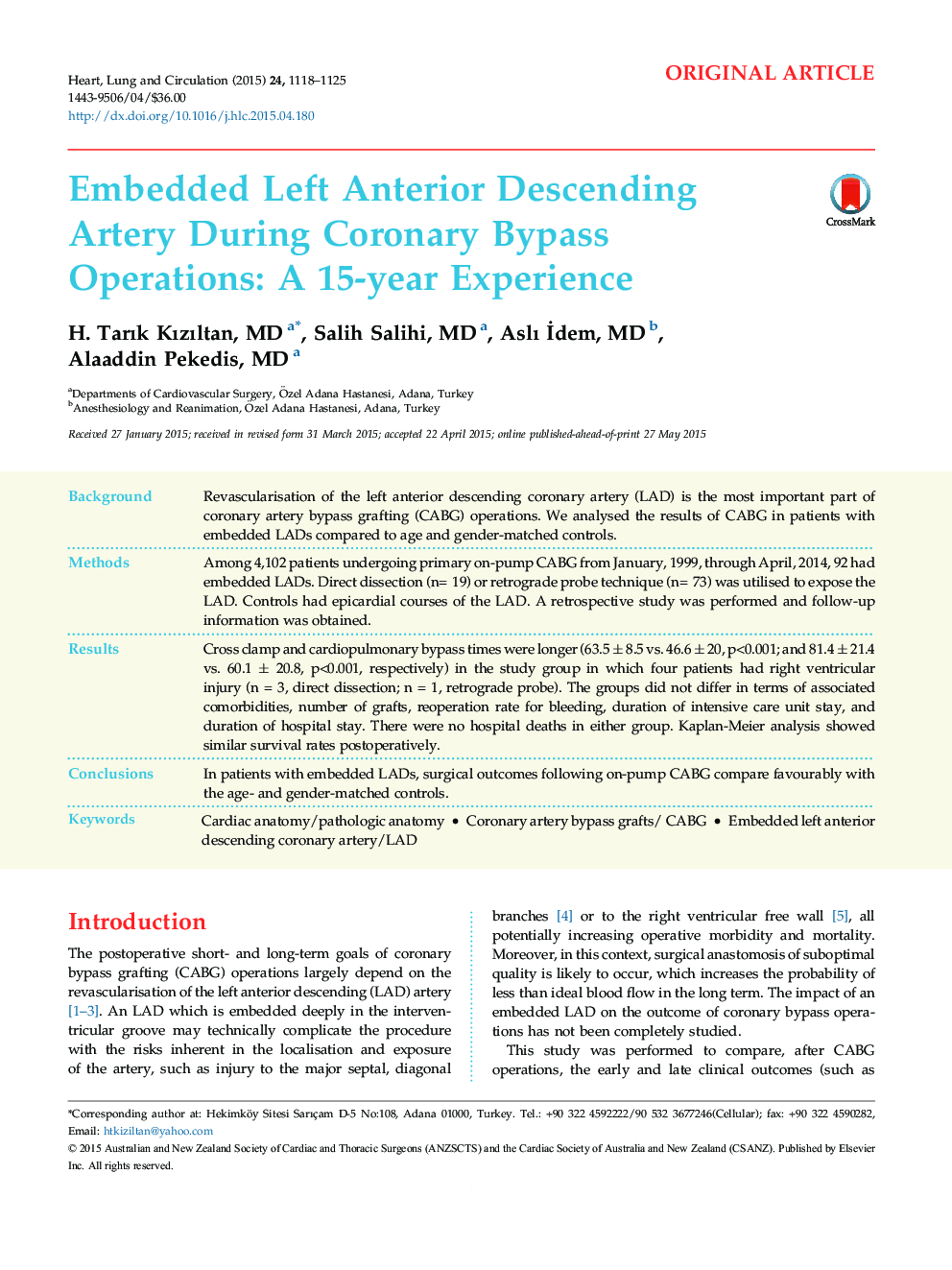| Article ID | Journal | Published Year | Pages | File Type |
|---|---|---|---|---|
| 2917387 | Heart, Lung and Circulation | 2015 | 8 Pages |
BackgroundRevascularisation of the left anterior descending coronary artery (LAD) is the most important part of coronary artery bypass grafting (CABG) operations. We analysed the results of CABG in patients with embedded LADs compared to age and gender-matched controls.MethodsAmong 4,102 patients undergoing primary on-pump CABG from January, 1999, through April, 2014, 92 had embedded LADs. Direct dissection (n= 19) or retrograde probe technique (n= 73) was utilised to expose the LAD. Controls had epicardial courses of the LAD. A retrospective study was performed and follow-up information was obtained.ResultsCross clamp and cardiopulmonary bypass times were longer (63.5 ± 8.5 vs. 46.6 ± 20, p<0.001; and 81.4 ± 21.4 vs. 60.1 ± 20.8, p<0.001, respectively) in the study group in which four patients had right ventricular injury (n = 3, direct dissection; n = 1, retrograde probe). The groups did not differ in terms of associated comorbidities, number of grafts, reoperation rate for bleeding, duration of intensive care unit stay, and duration of hospital stay. There were no hospital deaths in either group. Kaplan-Meier analysis showed similar survival rates postoperatively.ConclusionsIn patients with embedded LADs, surgical outcomes following on-pump CABG compare favourably with the age- and gender-matched controls.
